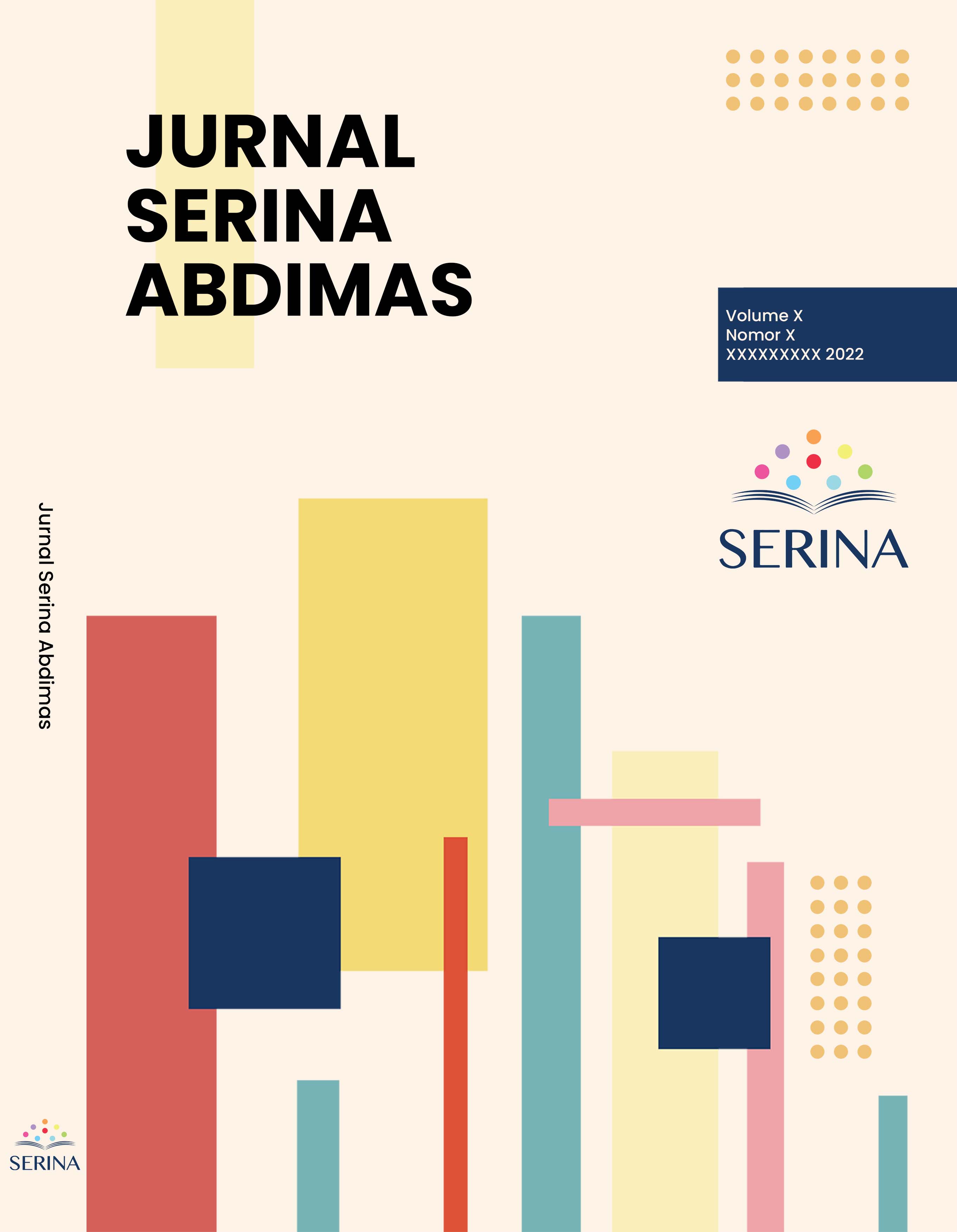KEGIATAN PEMERIKSAAN KESEHATAN TELINGA SEBAGAI DETEKSI DINI PADA POPULASI WANITA LANJUT USIA
Main Article Content
Abstract
The ear has a natural cleaning mechanism for excessive ear wax. Ear cleaning practices, such as inserting objects into the ear canal like cotton buds, matchsticks, and other objects commonly used to clean the ears, can pose a risk of injury. Earwax, or cerumen, functions to protect the ears from dust and foreign particles. However, excessive accumulation of earwax, especially in elderly people, can impair hearing and increase the risk of infection. As a result, physical examination of the ear is an important early detection method for the elderly. This activity uses the PDCA (Plan-Do-Check-Act) methodology to carry out ear examinations in the elderly group at St. Mary's Church, Francis of Assisi, Jakarta. The physical examination results showed that 7 (19.4%) respondents had an unassessable right eardrum, 2 (5.6%) had a perforated left eardrum, 7 (19.4%) had prop cerumen in their right ear, and 3 (8.3%) had prop cerumen in their left ear. Educating the public about the importance of proper ear cleaning practices is crucial for maintaining overall ear health. This can help prevent injuries and maintain hearing health.
ABSTRAK
Telinga memiliki mekanisme pembersihan alami terhadap kotoran atau serumen telinga yang berlebihan. Praktik pembersihan telinga, seperti memasukkan benda ke dalam liang telinga seperti cotton bud, batang korek api, dan benda lainnya yang biasa digunakan untuk membersihkan telinga dapat menimbulkan risiko cedera. Kotoran telinga atau serumen berfungsi melindungi telinga dari debu dan partikel asing. Namun, akumulasi kotoran telinga yang berlebihan, terutama pada orang lanjut usia, dapat mengganggu pendengaran dan meningkatkan risiko infeksi. Oleh karena itu, pemeriksaan fisik telinga sebagai deteksi dini sangat penting dilakukan pada lansia. Kegiatan ini menggunakan metodologi PDCA (Plan-Do-Check-Act) untuk melakukan pemeriksaan telinga pada kelompok lanjut usia di Gereja St. Fransiskus Asisi, Jakarta. Pada hasil pemeriksaan fisik diketahui bahwa terdapat 7 (19,4%) responden memiliki gendang telinga kanan yang tidak dapat dinilai, 2 (5,6%) responden memiliki gendang telinga kiri yang perforasi, 7 (19,4%) responden mengalami serumen prop pada telinga kanan serta 3 (8,3%) responden mengalami serumen prop pada telinga kiri. Edukasi kepada masyarakat tentang pentingnya praktik pembersihan telinga dengan tepat sangat penting untuk kesehatan telinga secara keseluruhan. Hal ini dapat membantu mencegah cedera dan menjaga kesehatan pendengaran.
Article Details

This work is licensed under a Creative Commons Attribution-NonCommercial-ShareAlike 4.0 International License.
References
Cheng, K. (2019). Prevention or Treatment of Hunan Ear Pain, Itch or Vertigo (Dizziness) Caused by Cerumen (Earwax) Impaction and Ear Hairs. 7, 52–55.
Davis, A., McMahon, C. M., Pichora-Fuller, K. M., Russ, S., Lin, F., Olusanya, B. O., Chadha, S., & Tremblay, K. L. (2016). Aging and Hearing Health: The Life-course Approach. The Gerontologist, 56(Suppl 2), S256–S267. https://doi.org/10.1093/geront/gnw033
Haji, A., Alharbi, B., Alhazmi, K., Alharthi, B., Kabli, A., & Siddiqui, M. I. (2021). Knowledge, Attitudes, and Practices of Self-ear Cleaning in Makkah Region, Cross-sectional Study. Saudi Medical Horizons Journal, 1(1), 26–33. https://doi.org/10.54293/smhj.v1i1.19
Horton, G. A., Simpson, M. T. W., Beyea, M. M., & Beyea, J. A. (2020). Cerumen Management: An Updated Clinical Review and Evidence-Based Approach for Primary Care Physicians. Journal of Primary Care & Community Health, 11, 2150132720904181. https://doi.org/10.1177/2150132720904181
Khan, N. B., Thaver, S., & Govender, S. M. (2017). Self-ear cleaning practices and the associated risk of ear injuries and ear-related symptoms in a group of university students. Journal of Public Health in Africa, 8(2), 555. https://doi.org/10.4081/jphia.2017.555
Lukolo, L. N., Kimera, L. C., & Pilbee, G. (2021). Self-Ear Cleaning Practices and the Associated Risks: A Systematic Review. Global Journal of Health Science, 13(5), 44. https://doi.org/10.5539/gjhs.v13n5p44
Oliveira, D. C. S. de, Gomes-Filho, I. S., Ramos, M. de S. X., Fonseca, A. L. B. da, Marques, A. A., Hintz, A. M., Rabelo, D. F., Figueiredo, A. C. M. G., & Cruz, S. S. da. (2023). Hearing Loss in the Elderly: A Proposal for Intervention in Primary Health Care. SAGE Open, 13(4). https://doi.org/10.1177/21582440231206374
Sevy, J. O., Hohman, M. H., & Singh, A. (2024). Cerumen Impaction Removal. In StatPearls. http://www.ncbi.nlm.nih.gov/pubmed/30277727
Tan, S. T., Nathaniel, F., & Firmansyah, Y. (2023). Edukasi dan Pemeriksaan Fisik Kesehatan Telinga pada Pekerja Usia Produktif. Jurnal Pengabdian Masyarakat Nusantara, 5(2), 66–74. https://doi.org/10.57214/PENGABMAS.V5I2.301
Tenty, T., Nathaniel, F., Wijaya, D. A., & Firmansyah, Y. (2023). Gambaran Keluhan Telinga dan Letak Perforasi Membran Timpani pada Pasien dengan Otitis Media Supuratif Kronis. MAHESA : Malahayati Health Student Journal, 3(10), 3273–3280. https://doi.org/10.33024/MAHESA.V3I10.11205

